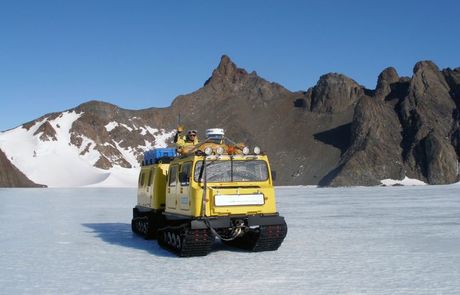La Trobe sky scanner coming to the South Pole

The United States will install cutting-edge equipment, designed and built at La Trobe University, at its South Pole scientific research station in January next year. The $500,000 rooftop dome spectrometer measures both auroras and airglow, the latter of which is usually invisible to the human eye.
Using a fish-eye lens, the instrument observes the entire sky simultaneously, mapping wind and temperature variations across a region about 1500 km in diameter. Coupled with the latest in computerised image processing, it scans from 15° above the horizon to a full 90°.
The equipment will be deployed at the South Pole to study a hard-to-reach part of the Earth’s atmosphere — between 100 and 400 km above the pole — which is too high for aircraft and weather balloons and too low for satellites. There, it will be used to measure shifts in the wavelength of light emitted from this region.
“This will provide us with information about the effects of space weather and high-altitude winds which can impact on communications, surveillance and navigation systems, such as GPS, and the operation of low-altitude satellites,” said La Trobe physicist Theo Davies.
Davies, who helped design the equipment, will accompany it to the US Amundsen-Scott South Pole Station, leaving for Antarctica on 12 December. With two colleagues from Alaska and South Africa, he will spend two months in Antarctica, installing and commissioning the system and preparing it to collect scientific data during the Antarctic winter.
The spectrometer will work in tandem with two other instruments, one at Australia’s Davis Station and another at the US McMurdo Station in Antarctica. La Trobe has also played a key role in their design and construction.
Polymers can act as a 'Trojan horse' for harmful chemicals
The scientific community has long believed that polymers are too big to migrate out of products...
Forever chemicals can be safely incinerated
A team of international scientists has shown how per- and polyfluoroalkyl substances (PFAS) can...
'Nuclear spin microscopy' based on quantum sensors
Researchers have used quantum sensors to extend magnetic resonance imaging to the realm of...




